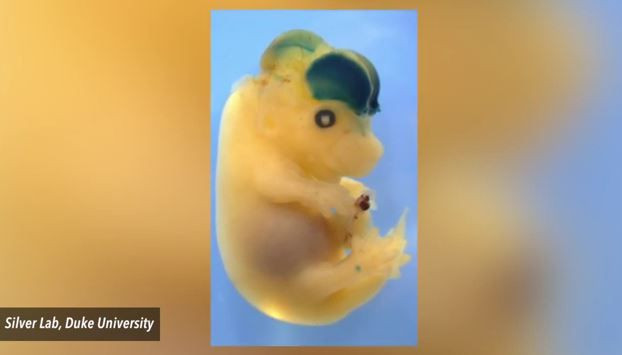The Power Of 'Junk' DNA: How DNA From A Human Brain Changes A Mouse's Brain

Why is the human brain larger than that of the chimpanzee, if most of our genes are the same?
Duke scientists theorize it may be all about an enhancer, a short region of "junk DNA" known to regulate gene activity. When they bioengineered a strain of mice with the human version of an enhancer known as HARE5, the mice embryos developed a 12 percent bigger brain than mice embryos with the chimpanzee version of the HARE5 sequence.
Based on this experiment, the researchers speculate that one reason human brains differ from those of chimps is because the human HARE5 enhancer caused the FZD8 gene (which plays a role in brain development and size) to be more active over a larger region of the developing brain. Going forward, the researchers continue to explore this and other enhancers that are active in the developing brain.
“We’re starting to study these enhancers more broadly in pluripotent stem cells,” Dr. Debra L. Silver, assistant professor in the department of molecular genetics and microbiology, told Medical Daily.
Junk DNA
The human genome contains hundreds of thousands of enhancers, which regulate the activity of genes. Enhancers are among the 98 percent of the human genome that does not code for proteins — thus referred to as "junk DNA." Despite this derisive name, scientists have never dismissed these stretches of genetic code and in fact have been searching for their possible function.
For this study, the Duke researchers examined genomic data from both humans and chimpanzees, to figure out which enhancers worked their magic early in the development of each species and primarily in the brain tissue.
They also were looking for enhancers that differed dramatically between the two and they found 106 potential candidates. Of these, six enhancers were near genes involved in brain development. The group dubbed these the “human-accelerated regulatory enhancers” or HARE1 through HARE6.
Because HARE5 made physical contact with the FZD8 gene ("Frizzled 8" in scientific lingo), the researchers took a closer look at this particular enhancer. The human HARE5 and the chimpanzee HARE5 sequences differed by only 16 letters in their genetic code, they observed. Next, moving beyond examination, the researchers designed a unique experiment.
They bred two separate strains of mice, identical but for one trait. One strain had the human HARE5 sequence incorporated into their genomes, while the other strain had the chimpanzee HARE5 sequence. Then they let nature take its course.
As the separate groups of embryos approached gestation’s end, the scientists began to see, with their naked eyes, differences in brain size. All told, the mice with human HARE5 developed brains that were 12 percent larger compared to the mice with chimpanzee HARE5. The brain region most affected by this growth was the neocortex, involved in language and reasoning.
Next, the scientists studied fetal brain tissue of the mice under a microscope. They discovered the stem cells with human HARE5 were dividing 23 percent faster and generating more neurons than their chimpanzee HARE5 counterparts. While the Duke team has continued to study the mice for possible differences in behavior and cortex structure, they have not yet completed the work or published results.
"It takes time," Silver said.
Source: Boyd JL, Skove SL, Rouanet J, et al. Human-Chimpanzee Differences in a FZD8 Enhancer Alter Cell-Cycle Dynamics in the Developing Neocortex. Current Biology. 2015.



























